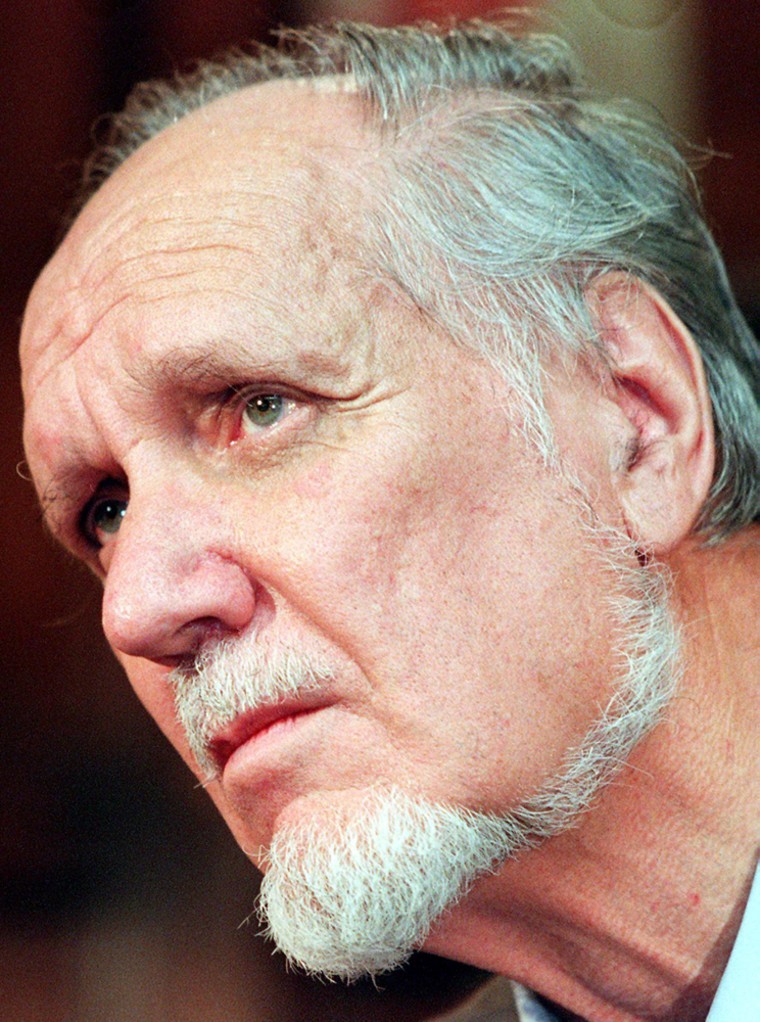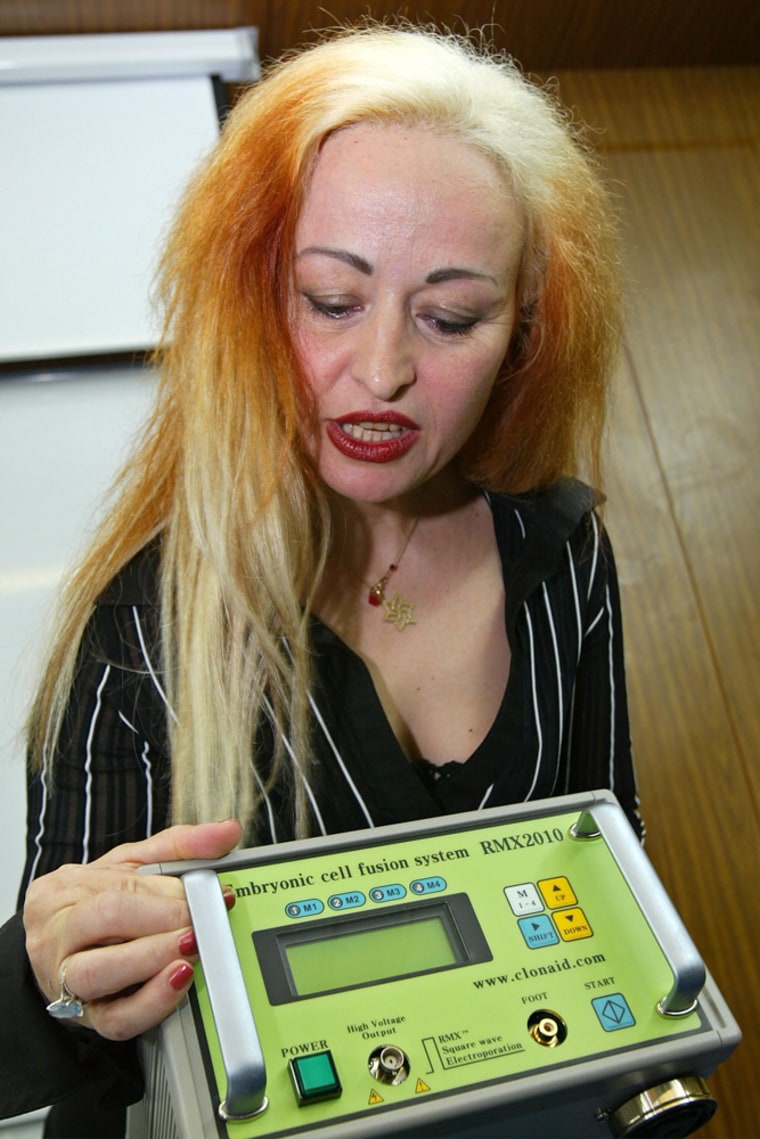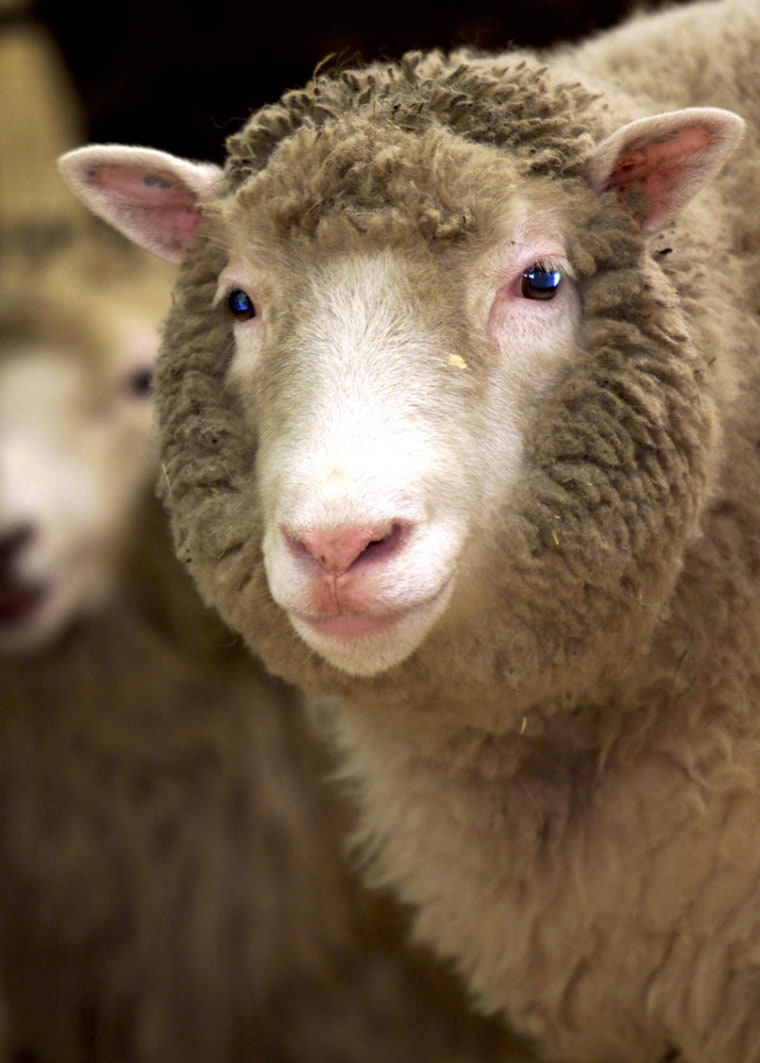Ten years ago today, the birth of the first cloned mammal — a sweet-faced sheep named Dolly — was announced to the world. Her creators, a team of veterinary scientists at Scotland’s Roslin Institute, approached their landmark scientific achievement with a sense of humor: They named the lamb after Dolly Parton. (The DNA they used to clone her came from a breast cell.) Much of the rest of the world, however, was not amused.
Dolly’s creation set off a storm of fear, confusion, misunderstanding, pandering and double-talk that culminated in the greatest fraud ever perpetrated in the history of biomedicine — the false claim that a South Korean scientist had cloned human embryos and made stem cells from them.
Dolly’s creators were so giddy because they had demonstrated it was possible to reactivate all the genes in a cell taken from an adult mammal. They made a grown-up cell act like a kid again.
At the time, almost no scientist thought cloning was possible from the DNA of adult animals. Cloning had already been accomplished in tadpoles and by using embryonic cells, but science dogma held that once a cell had grown up and become specialized — by turning into a skin cell, a hair follicle or a breast cell, for instance — its DNA was through. There was no way to get that DNA to switch on again and act like an embryo.
What intrigued scientists about Dolly had little to do with what captivated the rest of humanity. The main preoccupation of religious, philosophical and social commentators 10 years ago was how rapidly Dolly would be followed by the creation of a human clone who would destroy the world.
So, where are these clone armies?
In the weeks following Dolly’s announcement, mainstream media reports were full of irresponsible speculations by all sorts of experts and “authorities” on what Dolly’s birth meant for you and me.

Some worried that cloning would lead fiendish dictators to create armies of clones bred for war. Others fussed that the rich and egomaniacal would seek to create clones of themselves so they could live forever. Still others warned that clones would serve as mobile spare-parts farms. Need a liver or a kidney? Just carve out your clone’s and off you go, good as new. And what about cloners resurrecting the dead from bits of DNA found at museums, graveyards and churches?
All this nutty speculation led to a worldwide panic about biological engineering as seen before only in Hollywood films from the 1950s such as “Invasion of the Body Snatchers” and “Attack of the 50 Foot Woman.” Presidents, popes and potentates across the globe went bonkers warning us against human cloning. Laws forbidding human cloning — which were premature at best, since the chances of producing a human clone hard on the heels of Dolly’s birth were, as I tried to point out at the time, next to nothing — were proposed left and right.
Then it got truly scary. Because that's when the cavalcade of cloning kooks came out.
Bring in the clowns
The parade was led by the felicitously named Richard Seed, a physicist who announced in December 1997 that he intended to clone the first human being. Anchors and talking heads everywhere granted Seed a worldwide platform to babble on about his plan to use cloning to bring humans closer to God.

Seed was soon followed in his "I will clone and you cannot stop me" mania by Kentucky fertility expert Panayiotis Zavos and maverick Italian fertility doctor Severino Antinori, best known for helping a 62-year-old woman become pregnant. For a time these two teamed up and proposed setting up a cloning operation on a boat in international waters.

These characters did their best to convince the world that they held the bottle in which the genie of cloning resided. The media and politicians lapped it up. But this gaggle of kooks paled in comparison to the arrival of the group forever linked in the minds of the world with human cloning: the Raelians.
The Raelians, a religious cult that believes extraterrestrials used genetic engineering to create life on Earth, secured a worldwide audience with their cloning threats.
In 2002, Dr. Brigitte Boisselier, a college chemistry professor, Raelian bishop and CEO of the sci-fi start-up Clonaid, along with Rael, the founder of the Raelians and a former French pop singer and race-car aficianado, announced to an aghast world press that Clonaid had successfully cloned a human being. Boisselier said that the mother delivered by Caesarean section somewhere outside the United States, and declared that both the mother and the little girl, Eve, were healthy.
Despite loads of fanfare and claims of a slew of additional clones, no DNA proof was ever offered up.
Why anyone would think that a chemist with a bad hair-dye job and a cult leader parading around in a Starfleet uniform had the scientific know-how and skills required for human cloning was not apparent. However, these two took over the airwaves for weeks. They also appeared as witnesses testifying about cloning in the U.S. Congress and before the National Academy of Sciences!
A perfect storm of nutty professors, kooky cultists and shameless self-promoters used the media to get their screwball message out: Human cloning was not only possible, it had been done and the frightening power of cloning resided perilously in the craziest hands on the planet.
Mainstream madness
Things were not going all that much better in mainstream science. The scientists who created Dolly got into a nasty dispute over who deserved credit for her creation.
Dolly herself got sick, was euthanized and wound up stuffed for a display at a museum in Scotland in 2003. Scientists worldwide managed to clone other species including mice, goats, pigs, cattle and rabbits but at a terrible price in terms of stillborn, sick and deformed animals.
But the biggest blow — to scientific integrity — was still to come.
Scientists quickly recognized that cloning might be a useful way to take advantage of the embryonic stem cell discovered shortly after Dolly’s birth, but with much less fanfare. Cloned embryos made from adult human cells might hold the key to technology capable of replacing worn-out or damaged human cells.

The drive to be the first to show that cloning human embryos was possible led to dubious announcements by a few scientists that they had made cloned embryos. The cloning race culminated in the whopping lie told to the world by South Korea’s Hwang Woo-suk. In a fabricated paper published in May 2005 in the prestigious journal Science, he claimed to have cloned many human embryos and extracted stem cells from them.
Political trump card
Those who hated the prospect of any form of cloning — animal or human — and those who were morally horrified by the prospect of human embryonic stem cell research, including President Bush, Sen. Sam Brownback, R-Kan., Rep. Dave Weldon, R-Fla., and Rep. Ron Paul, R-Texas, among others, proposed bills that would stop the strategy of “clone and kill.” The tactics, incredibly, worked.
Public funding for embryonic stem cell research foundered on the legacy of fear built by nuts, the media, scientists bickering amongst themselves, fabricators and politicians who played the cloning card again and again.
So where does this dismal history leave cloning today?
Animal cloning has proven incredibly difficult. There are noises being made about introducing meat or milk from cloned animals into the food supply, but the economic practicality of that happening given how hard and expensive it is to clone animals makes this all talk. The huge risk of creating a dead or deformed baby has put all talk of human cloning firmly on the back burner. The fact that there still has been no successful cloning of a primate using Dolly-style techniques shows just how hard — or maybe, impossible — human cloning is.
Cloning for research is still of interest to scientists around the world, but no one has been able to make it work reliably.
The place where cloning continues to thrive is in Hollywood, TV and science fiction. There, clones are still mined for body parts, mad scientists can still gin up a possessed clone kid and evil dictators still create their clone armies to conquer the galaxy.
Ten years after the announcement of Dolly’s creation, cloning is a subject that still scares most of us when all it really is is a new, very difficult, very inefficient and very tricky way to make a lamb.
Arthur Caplan, Ph.D., is director of the Center for Bioethics at the University of Pennsylvania.
